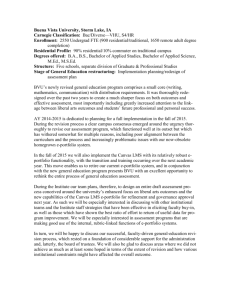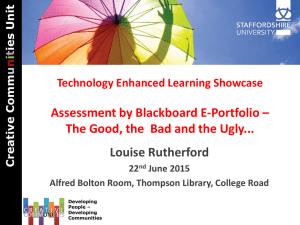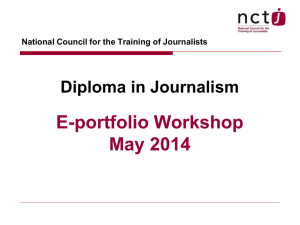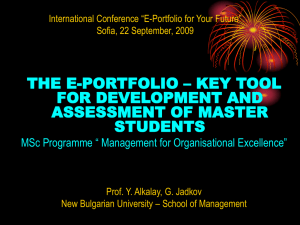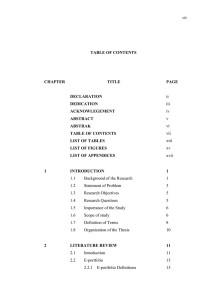CI51X Background/Rationale Innovative classroom uses of technology are closely associated with the...
advertisement
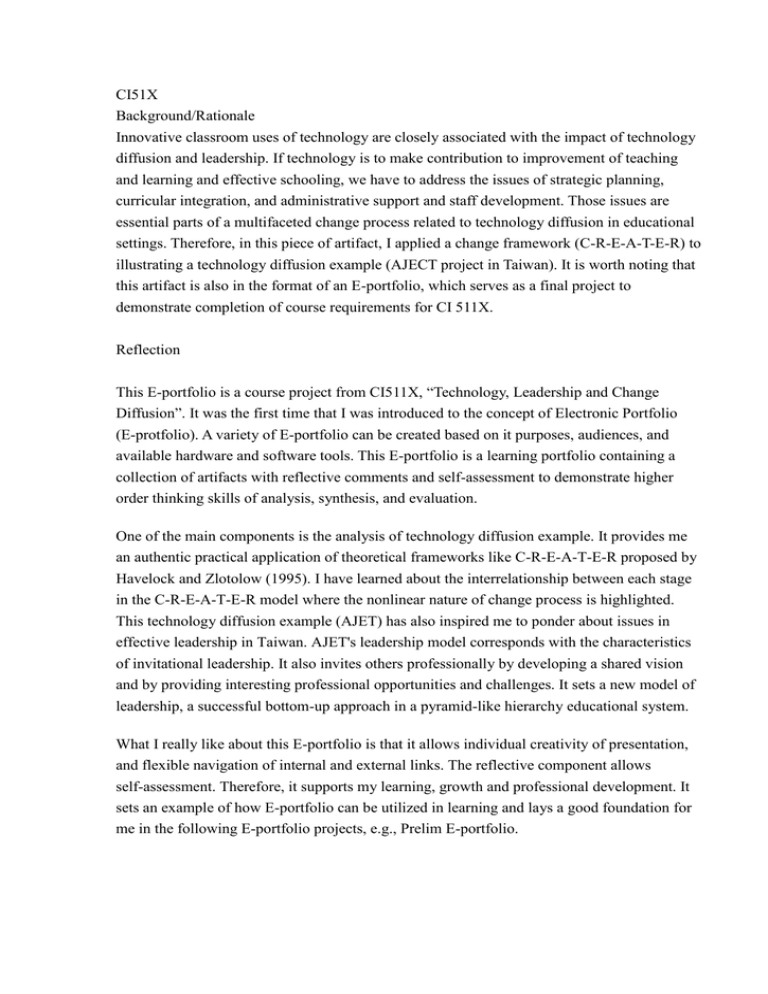
CI51X Background/Rationale Innovative classroom uses of technology are closely associated with the impact of technology diffusion and leadership. If technology is to make contribution to improvement of teaching and learning and effective schooling, we have to address the issues of strategic planning, curricular integration, and administrative support and staff development. Those issues are essential parts of a multifaceted change process related to technology diffusion in educational settings. Therefore, in this piece of artifact, I applied a change framework (C-R-E-A-T-E-R) to illustrating a technology diffusion example (AJECT project in Taiwan). It is worth noting that this artifact is also in the format of an E-portfolio, which serves as a final project to demonstrate completion of course requirements for CI 511X. Reflection This E-portfolio is a course project from CI511X, “Technology, Leadership and Change Diffusion”. It was the first time that I was introduced to the concept of Electronic Portfolio (E-protfolio). A variety of E-portfolio can be created based on it purposes, audiences, and available hardware and software tools. This E-portfolio is a learning portfolio containing a collection of artifacts with reflective comments and self-assessment to demonstrate higher order thinking skills of analysis, synthesis, and evaluation. One of the main components is the analysis of technology diffusion example. It provides me an authentic practical application of theoretical frameworks like C-R-E-A-T-E-R proposed by Havelock and Zlotolow (1995). I have learned about the interrelationship between each stage in the C-R-E-A-T-E-R model where the nonlinear nature of change process is highlighted. This technology diffusion example (AJET) has also inspired me to ponder about issues in effective leadership in Taiwan. AJET's leadership model corresponds with the characteristics of invitational leadership. It also invites others professionally by developing a shared vision and by providing interesting professional opportunities and challenges. It sets a new model of leadership, a successful bottom-up approach in a pyramid-like hierarchy educational system. What I really like about this E-portfolio is that it allows individual creativity of presentation, and flexible navigation of internal and external links. The reflective component allows self-assessment. Therefore, it supports my learning, growth and professional development. It sets an example of how E-portfolio can be utilized in learning and lays a good foundation for me in the following E-portfolio projects, e.g., Prelim E-portfolio. Reference Havelock, R. G., & Zlotolow, S. (1995). The stages of planned change. In R. G Havelock and S. Zlotolow (Eds.), The change agent's guide (2nd ed.). Englewood Cliffs, NJ: Educational Technology Publications.
